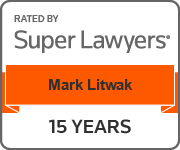The Campbell Supreme Court opinion examined the fourth statutory fair use factor, namely, the effect of the subsequent use on the original's potential market and found that this factor was limited to realistic potential markets. The court explained that it was unlikely that the copyright owners of "Oh, Pretty Woman" would have released a parody rap version of their own song, and therefore the fourth fair use factor favored the defendants. Thus, the Court interpreted the fourth factor in a manner that favors a fair use.
As a reminder, the four factors to determine fair use are:
(1) the purpose and character of the use, including whether such use is of a commercial nature or is for nonprofit educational purposes;
(2) the nature of the copyrighted work;
(3) the amount and substantiality of the portion used in relation to the copyrighted work as a whole;
(4) the effect of the use upon the potential market for or value of the copyrighted work.
However, last week the Supreme Court appeared to go in the opposite direction by restricting the fair use defense in its decision of Andy Warhol Foundation v. Goldsmith. In 1984 Vanity Fair magazine wanted to license one of Lynn Goldsmith’s photographs of the musician Prince to illustrate a story about him. Goldsmith agreed on the condition that the use of her photo be a “one time use.” Vanity Fair then hired Andy Warhol to make a silkscreen based on Goldsmith’s photo, and then published this image with its article about Prince.
Without Goldsmith’s knowledge, Warhol also created 15 additional works based on her photograph, one of which is orange and called “Orange Prince.” After Prince died in 2016, the Andy Warhol Foundation for the Visual Arts, Inc. (AWF) licensed Orange Prince to Condé Nast, for the purpose of illustrating a special magazine titled “The Genius of Prince.” AWF was paid $10,000 while Goldsmith received nothing. After Goldsmith informed AWF that she believed its use of her photograph infringed her copyright, AWF sued her for a declaratory judgment asking the court to find that that their use was not a fair use, which would not require a license. Goldsmith counterclaimed for copyright infringement.
The court found that the “purpose and character” of AWF’s use of Goldsmith’s photograph in commercially licensing the work to Condé Nast did not favor AWF’s fair use defense. The court stated:
As portraits of Prince used to depict Prince in magazine stories about Prince, the original photograph and AWF’s copying use of it share substantially the same purpose. Moreover, AWF’s use is of a commercial nature. Even though Orange Prince adds new expression to Goldsmith’s photograph, in the context of the challenged use, the first fair use factor still favors Goldsmith…In sum, if an original work and secondary use share the same or highly similar purposes, and the secondary use is commercial, the first fair use factor is likely to weigh against fair use, absent some other justification for copying.
Justice Kagan and the Chief Justice issued a strong dissent stating that the majority opinion was not a continuation of existing copyright law and failed to acknowledge the importance of transformative copying. Citing the prior Campbell case, she argued that the first factor should concern whether the new work is transformative or not. “The more transformative the new work, the less will be the significance of other factors, like commercialism, that may weigh against a finding of fair use.”
Justice Kagan noted:
All of Warhol’s artistry and social commentary is negated by one thing: Warhol licensed his portrait to a magazine, and Goldsmith sometimes licensed her photos to magazines too. That is the sum and substance of the majority opinion. Over and over, the majority incants that “[b]oth [works] are portraits of Prince used in magazines to illustrate stories about Prince”; they therefore both “share substantially the same purpose”—meaning, a commercial one.
Of course, “Big Hairy Woman” and "Oh, Pretty Woman" are both songs that share the same purpose. This latest Supreme Court decision muddies the landscape and will make it more difficult to predict which uses are fair and which are not. Read the decision.
[1] 114 S. Ct. 1164 (1994)

